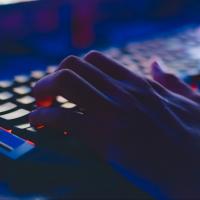Cybersecurity Consciousness during COVID-19

The COVID-19 situation is unique and hopefully once in a lifetime for all of us. As we all deal with it across the globe—medically, economically, and professionally—there are plenty of lessons to discover. There is also a lot to learn when it comes to cybersecurity.
Even organizations that have strictly advocated against working from home are now having to consider enacting a remote presence in order to maintain business continuity. IT teams are overwhelmed in ensuring remote setups work not just from functional and performance standpoints, but also from a security standpoint.
Any small vulnerability gives enough entryway for hackers to attempt to break into our systems, even in digitally savvy countries like the US. And with the confusing and ever-changing situations people are now in globally, it’s prime time for bad actors to explore all possible combinations of attacks. Even leading products and platforms are not immune to security hacks.
As we all try to figure out what our “new normal” is going to look like, for the time being there are things we can do to be cautious in safeguarding our personal and professional IP and assets.
At a minimum, how you connect to your professional network is important, as is the device you use. If you’re relying on a personal device, ensure it is completed patched and secure. In most cases an official work laptop is already patched, but it never hurts to get it double-checked with your organization’s IT team.
Be aware of any unsolicited calls and emails with attachments, especially ones that look real with domains of well-known organizations. If any such official communication needs to come in, it would be from that IT team, not from individual sources.
There is also currently a lot of crowdfunding happening to support global organizations in the drive to assist impacted people. Watch for trusted sources, and do your research so you don’t fall prey to phony solicitations.
Watch for scenarios where actions on your screen are self-driven—for example, if your mouse starts performing actions on its own—as this indicates that someone may have taken control of your device. If you notice this, immediately disconnect from the network and reach out to your IT team.
The above scenarios may sound basic, but they are all being leveraged by hackers around the world to take advantage of people’s anxiety. With all the uncertainty and nervousness, people are more perceptible to malicious attempts such as phishing scams.
IT teams have been working to ensure safe environments as we all move to working from home, but it’s important that we do our parts too. With basic levels of due diligence—especially around network connectivity, being aware of what messages we forward and process, vetting attachments, periodically changing passwords, and putting security ahead of convenience—we can make cybercrime one fewer thing we have to worry about right now.

